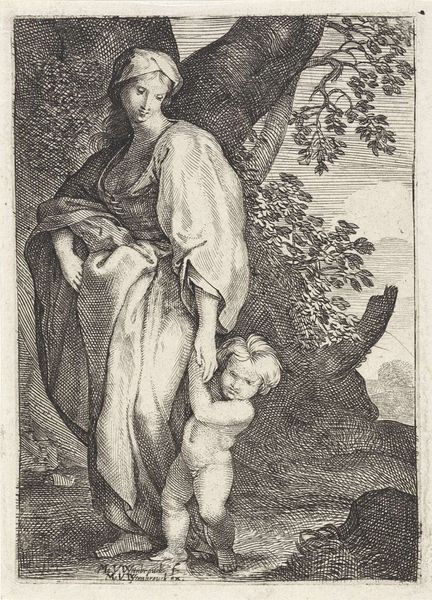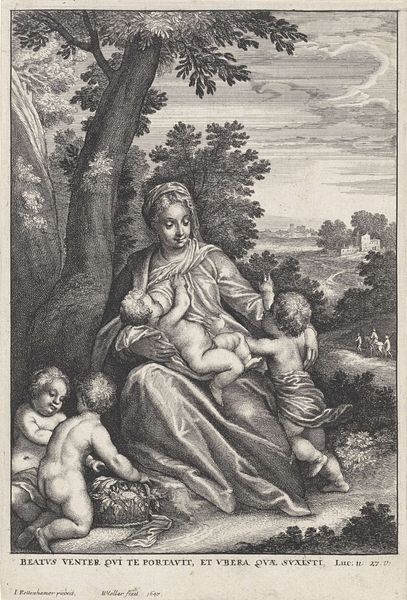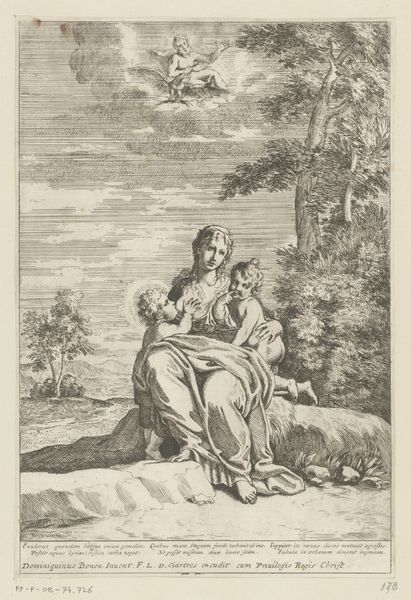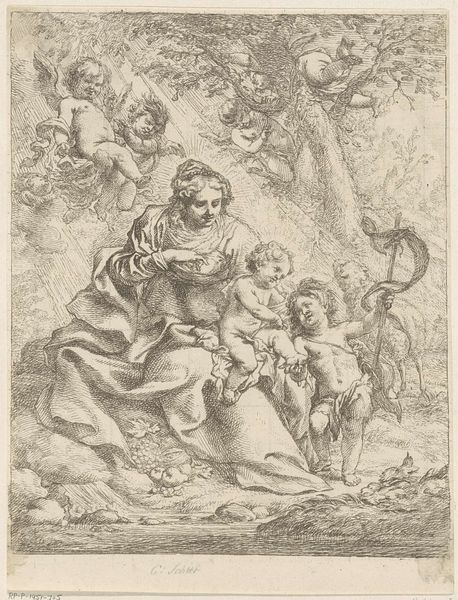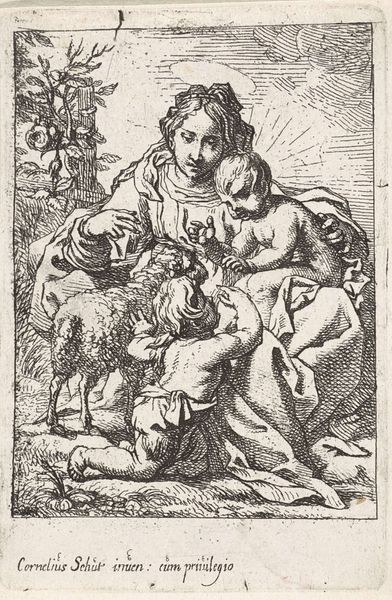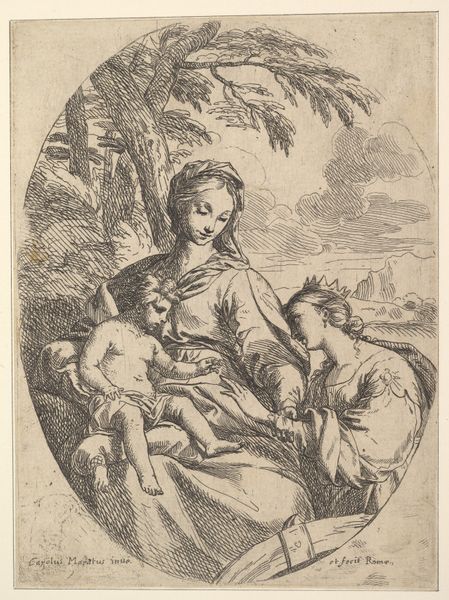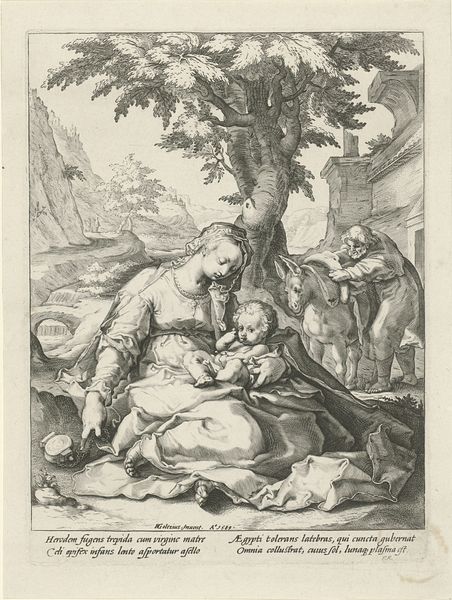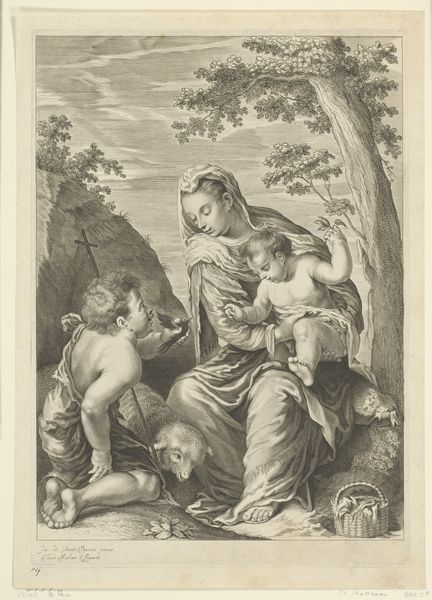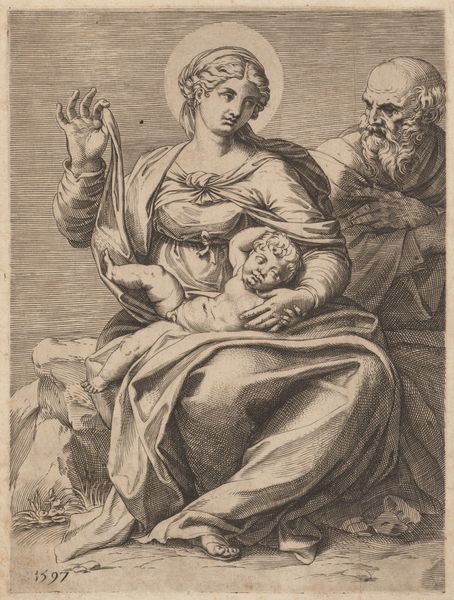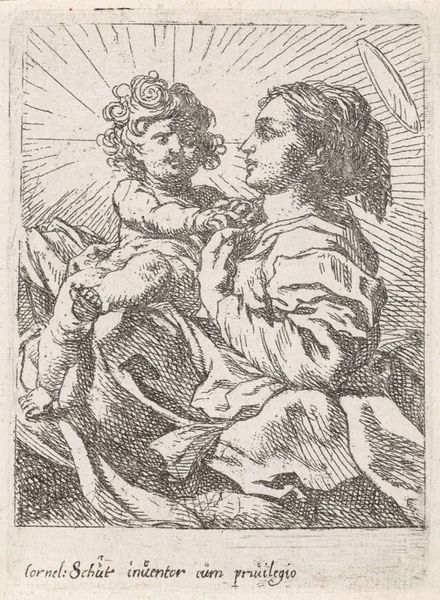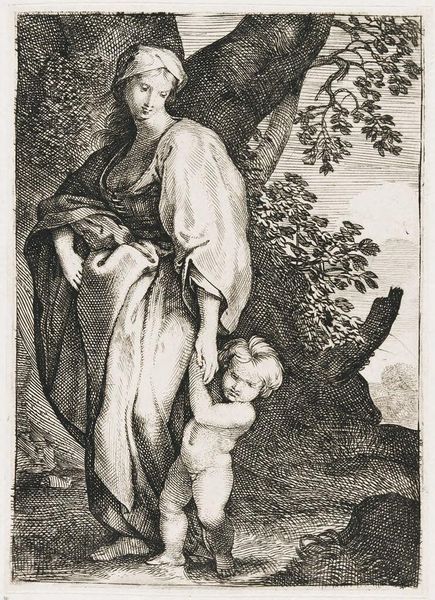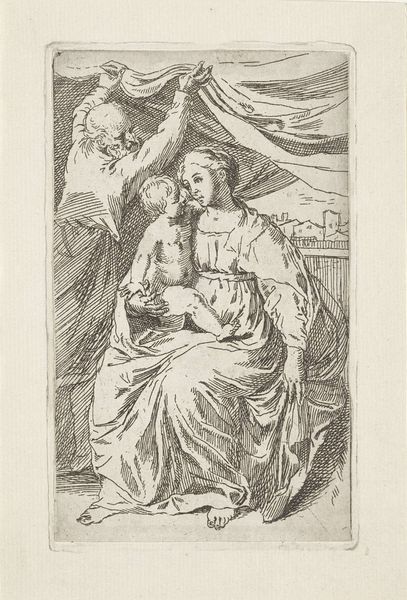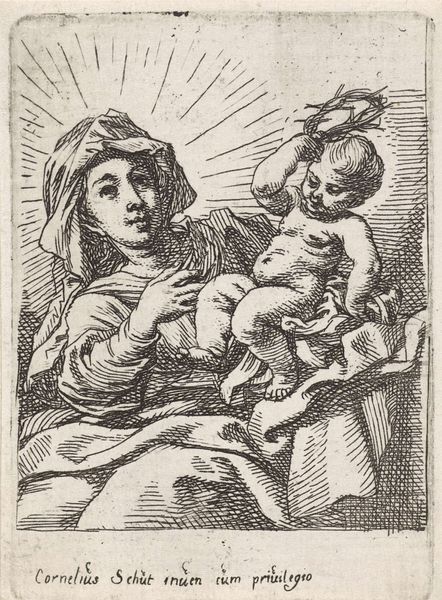
print, engraving
#
baroque
# print
#
landscape
#
figuration
#
engraving
Dimensions: height 205 mm, width 170 mm
Copyright: Rijks Museum: Open Domain
Curator: Here we have "Madonna and Child with John the Baptist in a Landscape," an engraving by Cornelis Schut, dating somewhere between 1618 and 1655. Editor: It's interesting seeing a religious scene rendered in a print – a medium often associated with broader distribution. What draws your eye in this work? Curator: Considering the context, prints were indeed more accessible. But how does the mass-produced nature of an engraving impact the value we place on the sacred subject? What happens when the holy image becomes… consumable? Editor: So you are saying that reproducing it so many times reduces it value or that the opposite happens by reaching a broader audience? Curator: It brings a broader audience into contact, undoubtedly, but look closer. What does it mean to translate this image—traditionally associated with unique paintings destined for wealthy patrons—into a reproducible format? Consider the labor involved: the engraver's skill, the printer's press, the distribution networks. The materiality of the print itself becomes significant. Is it "high art" or a devotional object for the masses? Does it attempt to be both? Editor: I never thought about the "means of production" with religious iconography. That makes me wonder how people during the Baroque era felt about religious prints like this. Curator: Precisely. It forces us to confront the commercialization of faith. The very act of reproducing and selling this image transformed its meaning. We have to look beyond the religious narrative. Consider the material implications, the labor involved, the system of consumption it becomes a part of. It becomes clear how the production process profoundly affected this particular image's purpose within society. Editor: Thanks. Thinking about art as a commercial product gives it a new meaning, especially when that art has religious themes. Curator: Exactly! And it urges us to constantly reconsider the boundaries between the sacred and the secular, the unique and the mass-produced, the artist and the market.
Comments
No comments
Be the first to comment and join the conversation on the ultimate creative platform.
